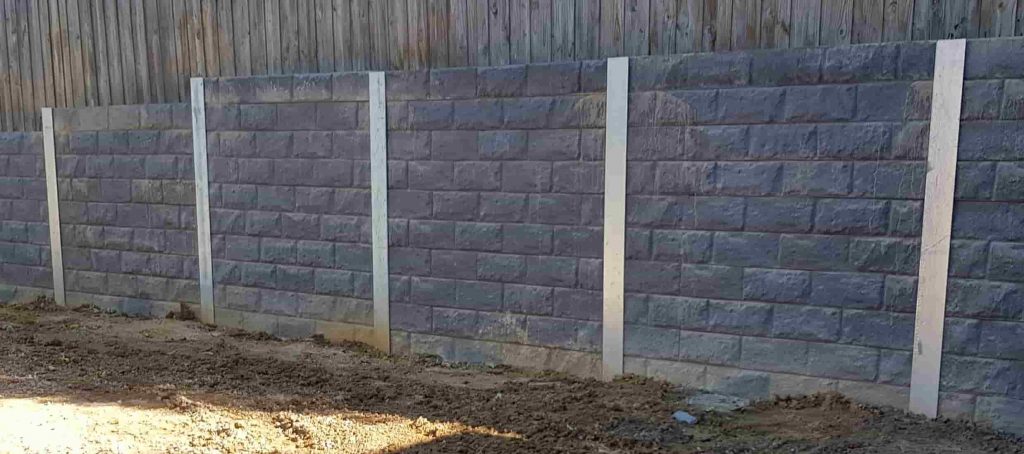Introduction
When it pertains to landscape construction, among the most significant features to consider is a retaining wall. This structure not just boosts visual appeal but also serves vital practical functions, such as avoiding soil erosion and managing water drain. But when you decide to develop a retaining wall, you might wonder: Should I hire a retaining wall installer or a retaining wall builder?
The terminology can be complicated, and the functions may overlap in some aspects, yet there stand out differences that can affect your job's result. This post dives deep into the nuances in between these two occupations, equipping you with the understanding needed to make an informed decision for your landscape project.
Retaining Wall Installer vs. Builder: Understanding the Differences
At first glimpse, both a retaining wall installer and a retaining wall builder might seem like they carry out comparable tasks. Nevertheless, understanding their specific functions can help you select the right specialist for your needs.
What Does a Retaining Wall Installer Do?
A retaining wall installer specializes in the setup process of keeping walls. These professionals focus on making sure that walls are appropriately constructed according to design requirements and local guidelines. They are fluent in different products such as:
- Concrete sleeper H beam Wood sleeper Timber sleeper Stone
Their main duty involves positioning these products correctly to guarantee stability and longevity.
What Does a Retaining Wall Builder Do?
On the other hand, a retaining wall builder incorporates a wider scope of work that consists of not simply setup however likewise style and planning phases of maintaining walls. Home builders often collaborate with designers and landscape designers to produce comprehensive strategies that deal with both performance and aesthetics.
Key Differences In between Installers and Builders
Scope of Work- Installers focus on laying out materials for construction. Builders take part in design, planning, and execution.
- Installers are perfect for straightforward projects. Builders manage more complicated styles that need careful planning.
- Installers have hands-on experience with different types of materials. Builders understand how material options effect general design.
- Installers often follow already approved designs. Builders may need to obtain permits before starting work.
Types of Keeping Walls
Understanding the types of maintaining walls is important when deciding in between an installer or builder.
Gravity Maintaining Walls
These walls rely exclusively on their weight to withstand lateral pressure from soil. They're usually made from stone or concrete blocks.
Cantilevered Keeping Walls
Constructed using reinforced concrete slabs or beams (like H beams), cantilevered walls use utilize to combat soil forces effectively.
Sheet Stack Walls
These include long sheets (frequently steel or vinyl) driven into the ground and are perfect for tight spaces where gravity walls might not fit.
Segmental Keeping Walls (SRWs)
Made from interlocking concrete blocks, SRWs use flexibility in design while being easy to set up-- best for installers who specialize in easier projects.

Common Materials Utilized by Maintaining Wall Professionals
Each type of wall needs particular materials that affect resilience and appearance.
1. Concrete Sleeper
Concrete https://tuffstuffretainingwalls.com.au/ sleepers are popular due to their toughness and low upkeep requirements.
2. H Beam
H beams supply strength and stability for cantilevered walls but require mindful handling during installation.
3. Wood Sleeper
Wood sleepers provide natural aesthetics however can be prone to rot unless dealt with correctly.
4. Wood Sleeper
Similar to wood sleepers but often originated from more sustainable sources, making them eco-friendly choices for numerous homeowners.
5. Stone
Natural stone supplies classic beauty but needs experienced workmanship for proper installation.
Evaluating Your Job Needs
Before choosing between an installer or home builder, examine your project requirements carefully:
1. What is Your Budget?
Your budget plan will considerably affect whether you choose an installer concentrating on economical services or a detailed contractor whose services might come at a premium.
2. What is Your Timeline?
If you're working versus time restrictions, an experienced installer might get things done faster than waiting on a contractor's substantial planning process.
3. Are You Seeking Aesthetic Appeal?
If style is paramount-- like utilizing natural stone-- consider hiring a contractor who can develop detailed designs rather than simply concentrating on structural integrity alone.
Pros and Cons of Hiring a Retaining Wall Installer
While installers play an essential function in constructing keeping walls, they come with their own set of pros and cons:
|Pros|Cons|| ---------------------------|----------------------------|| Frequently more economical|Limited style abilities|| Quick installation|May lack detailed understanding|| Specialized understanding|Dependence on builders' plans|
Pros and Cons of Working With a Retaining Wall Builder
Conversely, contractors use special advantages together with obstacles:
|Pros|Cons|| ---------------------------|----------------------------|| Thorough service|Higher expenses|| Personalized styles|Longer timelines|| Knowledge throughout several disciplines|Possible hold-ups due to planning|
FAQs About Maintaining Walls
1. How do I understand if I require an installer or builder?
If your task is simple with very little style requirements, hire an installer; if it's complicated needing detailed preparation, go with a builder.

2. What materials must I pick for my retaining wall?
Choose based on toughness requirements; concrete sleepers provide longevity while wood offers aesthetic appeal-- consider regional environment impacts too!
3. Can I install my own maintaining wall?
Yes! However, guarantee you're well-informed about local codes and building and construction strategies; otherwise hiring specialists makes sure safety and compliance with regulations!
4. The length of time does it typically take to build a keeping wall?
This varies considerably depending upon size & & complexity; basic setups may take days while elaborate builds can extend into weeks!
5. Will I need permits for my maintaining wall?
Most most likely! Local policies often need permits especially if walls exceed certain heights; constantly examine beforehand!
6. What upkeep do maintaining walls require?
Depending on material option upkeep varies; stone may need re-pointing while wood requires treatment versus pests & & rot-- routine checks guarantee longevity!
Conclusion
In summary, selecting in between a retaining wall installer versus a builder considerably influences not simply your project's outcome but likewise its performance in regards to time and cost management. While installers stand out at executing straightforward tasks rapidly using numerous materials like concrete sleepers or timber sleepers, builders bring creativity and detailed services necessary for intricate jobs involving stonework or H beams.
Ultimately comprehending each function's strengths will empower you as you embark upon this landscaping endeavor-- ensuring not just structural stability but likewise improving the beauty of your outdoor area! So weigh your options sensibly since investing in either competence might form how well your landscape withstands time-- a really fulfilling endeavor indeed!